Growing grapes at home might seem like a vineyard-sized dream, but trust me, it’s totally achievable, even if you’re working with a small backyard or a sunny balcony! Forget those pricey, sometimes bland, supermarket grapes. Imagine stepping outside and plucking juicy, sun-ripened grapes straight from your own vine – the taste is simply unmatched.
Grape cultivation has a rich history, dating back thousands of years to ancient civilizations like the Egyptians and Romans, who revered grapes not only for their delicious fruit but also for their role in winemaking. Today, you can tap into that legacy and bring a piece of that history to your own home.
Why should you try growing grapes yourself? Well, besides the obvious benefit of having a readily available supply of healthy snacks, it’s incredibly rewarding! You’ll learn about the plant’s life cycle, connect with nature, and enjoy the satisfaction of nurturing something from a small vine to a bountiful producer. Plus, it’s a fantastic way to add beauty and shade to your outdoor space. This DIY guide will provide you with simple, effective tricks and hacks to ensure your grapevines thrive, even if you’re a complete beginner. Let’s get started and turn your home into a mini-vineyard!
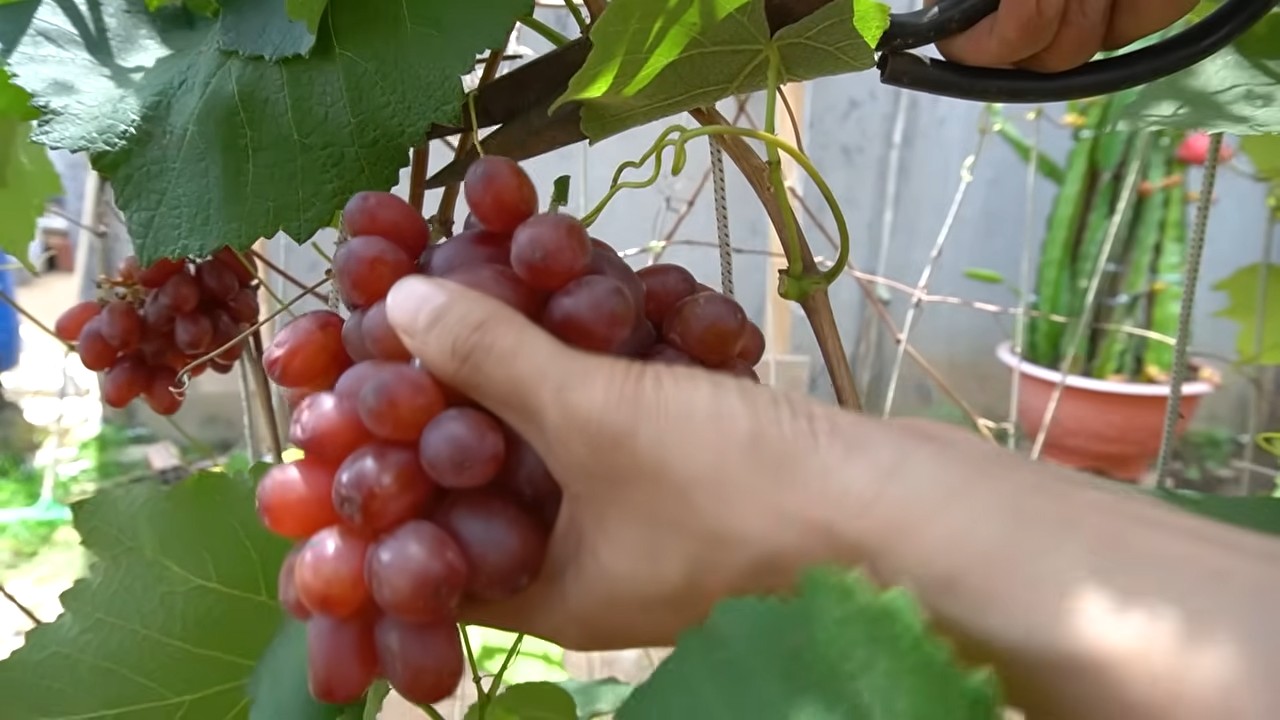
DIY Grape Growing: From Vine to Healthy Snack!
Okay, so you want to grow your own grapes? Awesome! It’s totally doable, and there’s nothing quite like popping a sun-warmed, homegrown grape into your mouth. It takes a little patience, but trust me, the reward is worth it. I’m going to walk you through everything you need to know, from choosing the right variety to harvesting your juicy bounty.
Choosing Your Grape Variety
First things first, you need to pick the right grape for your climate. Not all grapes are created equal! Some are hardy enough to withstand freezing winters, while others thrive in warmer regions.
* Consider your climate: This is the most important factor. Are you in a cold climate with harsh winters? Or a warm climate with long, hot summers? Look for varieties specifically recommended for your region. Your local nursery is a great resource for this!
* Table grapes vs. wine grapes: Table grapes are what you’ll eat fresh. They’re typically larger, sweeter, and have thinner skins. Wine grapes are smaller, have thicker skins, and a higher sugar content. Since you want healthy snacks, we’re focusing on table grapes.
* Seedless vs. seeded: This is a matter of personal preference. Seedless grapes are convenient, but some people find that seeded grapes have a richer flavor.
* Disease resistance: Look for varieties that are resistant to common grape diseases like powdery mildew and black rot. This will save you a lot of headaches (and fungicide!).
Some popular and relatively easy-to-grow table grape varieties include:
* ‘Thompson Seedless’: A classic, all-purpose grape. It’s sweet, crisp, and great for eating fresh, making raisins, or juicing. It does best in warmer climates.
* ‘Reliance’: A hardy, seedless grape that’s perfect for colder climates. It’s pinkish-red and has a sweet, slightly tart flavor.
* ‘Concord’: A classic American grape with a distinctive “grape” flavor. It’s seeded and very hardy. Great for juice and jelly.
* ‘Niagara’: Another American grape, similar to Concord but with a lighter, sweeter flavor. It’s also seeded.
* ‘Mars Seedless’: A blue-black seedless grape that’s very disease resistant. It’s a good choice for beginners.
Preparing the Planting Site
Okay, you’ve got your grape variety picked out. Now it’s time to get your planting site ready. Grapes need plenty of sunshine and well-drained soil.
* Sunlight: Grapes need at least 6-8 hours of direct sunlight per day. The more sun, the better!
* Soil: Grapes prefer well-drained soil with a pH between 6.0 and 7.0. If your soil is heavy clay, amend it with compost and other organic matter to improve drainage.
* Spacing: Grapevines need plenty of room to grow. Space them 8-10 feet apart in rows that are 10-12 feet apart.
* Support: Grapevines need a strong support system to climb on. You can use a trellis, an arbor, or even a fence. I prefer a simple trellis made of posts and wires.
Planting Your Grapevine
Alright, let’s get that grapevine in the ground!
1. Dig the hole: Dig a hole that’s twice as wide as the root ball and just as deep.
2. Amend the soil: Mix some compost or other organic matter into the soil you removed from the hole.
3. Remove the grapevine from its container: Gently loosen the roots and remove any circling roots.
4. Plant the grapevine: Place the grapevine in the hole so that the top of the root ball is level with the ground.
5. Backfill the hole: Fill the hole with the amended soil and gently tamp it down.
6. Water thoroughly: Water the grapevine deeply to settle the soil.
7. Mulch: Apply a layer of mulch around the base of the grapevine to help retain moisture and suppress weeds.
Training and Pruning Your Grapevine
This is where things get a little more technical, but don’t worry, I’ll break it down for you. Training and pruning are essential for getting a good crop of grapes.
* Training: Training is the process of guiding the grapevine to grow in a specific direction. This helps to maximize sunlight exposure and air circulation.
* Pruning: Pruning is the process of removing unwanted growth. This helps to improve fruit quality and prevent disease.
There are several different training systems you can use for grapevines. The most common are:
* Cane pruning: This system involves training the grapevine to a single trunk and then pruning the canes (the current year’s growth) back to a few buds each year. This is a good choice for cold climates.
* Spur pruning: This system involves training the grapevine to a single trunk and then pruning the spurs (short, permanent branches) back to a few buds each year. This is a good choice for warmer climates.
I recommend starting with cane pruning, as it’s generally easier for beginners.
Cane Pruning: A Step-by-Step Guide
1. Year 1: After planting, cut the grapevine back to two or three buds. This will encourage strong root growth.
2. Year 2: Choose the strongest shoot and train it to grow vertically up the trellis. Remove all other shoots.
3. Year 3: In the winter, cut the main shoot back to about 3-4 feet. This will encourage the growth of lateral shoots (canes).
4. Year 4 and beyond: In the winter, select 4-6 healthy canes that are evenly spaced along the trellis. Cut these canes back to about 8-10 buds each. Remove all other canes. These canes will produce the fruit for the following year.
Watering and Fertilizing
Grapes need consistent watering, especially during dry periods. They also benefit from regular fertilization.
* Watering: Water deeply and regularly, especially during the first year. Once established, grapes are relatively drought-tolerant, but they still need water during dry spells.
* Fertilizing: Fertilize in the spring with a balanced fertilizer. You can also add compost or other organic matter to the soil around the base of the grapevine. Avoid over-fertilizing, as this can lead to excessive vegetative growth and reduced fruit production. I like to use a fertilizer specifically formulated for grapes.
Pest and Disease Control
Grapes can be susceptible to a variety of pests and diseases. Here’s what you need to know to keep your vines healthy:
* Common pests: Japanese beetles, grape phylloxera, and spider mites.
* Common diseases: Powdery mildew, black rot, and downy mildew.
Here are some tips for preventing and controlling pests and diseases:
* Choose disease-resistant varieties: This is the best way to prevent disease problems.
* Provide good air circulation: Prune your grapevines regularly to improve air circulation and reduce humidity.
* Water early in the day: This will give the foliage time to dry before nightfall, which can help prevent fungal diseases.
* Use organic pest control methods: If you have pest problems, try using organic pest control methods like insecticidal soap or neem oil.
* Fungicides: If you have severe disease problems, you may need to use a fungicide. Choose a fungicide that is specifically labeled for use on grapes and follow the instructions carefully.
Harvesting Your Grapes
Finally, the moment you’ve been waiting for! Harvesting your grapes.
* Timing: Grapes are typically ready to harvest in late summer or early fall. The exact timing will depend on the variety and your climate.
* Ripeness: Grapes are ripe when they are fully colored, plump, and easy to pull from the vine. They should also taste sweet and juicy.
* Harvesting: Use pruning shears to cut the grape clusters from the vine. Handle the grapes gently to avoid bruising them.
Enjoying Your Harvest
Now that you’ve harvested your grapes, it’s time to enjoy them!
* Eating fresh: The simplest way to enjoy your grapes is to eat them fresh off the vine.
* Making juice: You can use a juicer to make fresh grape juice.
* Making jelly: Grape jelly is a classic treat.
* Making raisins: You can dry your grapes to make raisins.
* Freezing: Grapes can be frozen for later use. Simply wash and dry the grapes, then spread them out on a baking sheet and freeze them. Once frozen, transfer them to a freezer bag.
Growing your own grapes is a rewarding experience. With
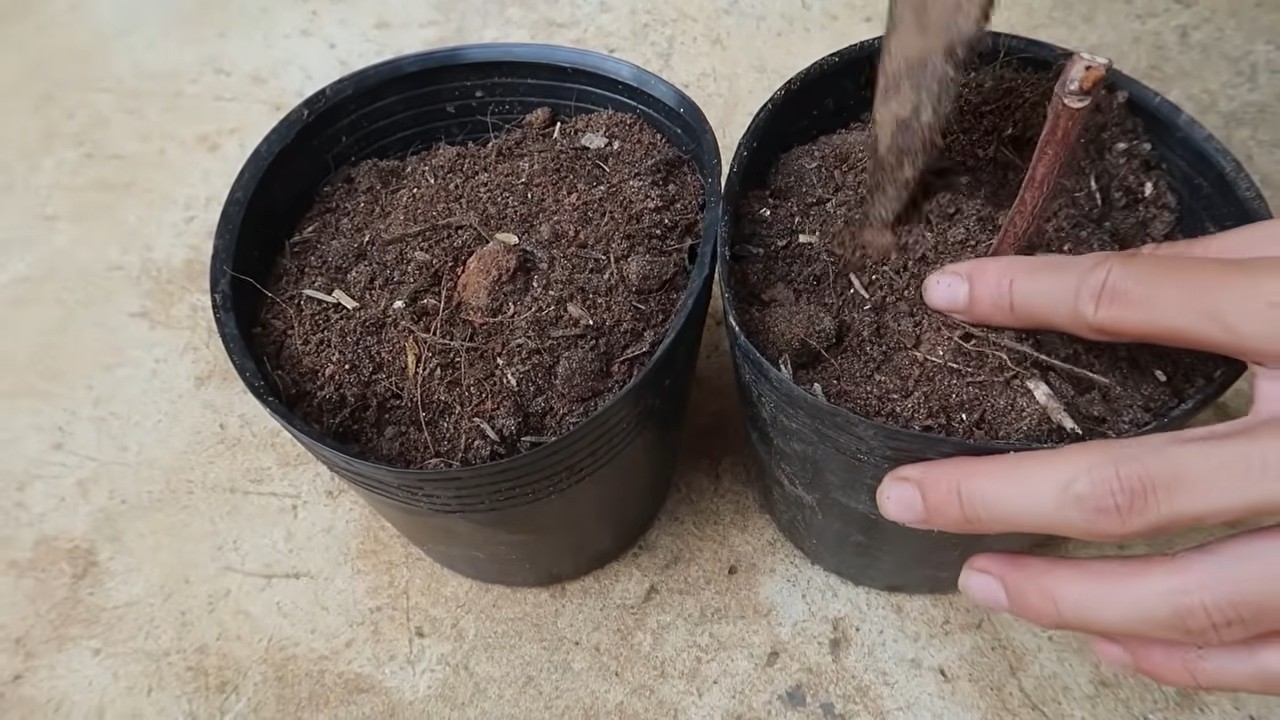
Conclusion
So, there you have it! Growing your own grapes for healthy snacks isn’t just a fun gardening project; it’s a gateway to enjoying the freshest, most delicious, and most rewarding fruit imaginable. We’ve explored the simple yet effective DIY trick of [mention the specific DIY trick discussed in the main article – assuming it’s something like “using coffee grounds as fertilizer” or “creating a DIY trellis system” – replace this bracketed text with the actual trick]. This method, whether it’s enriching your soil with repurposed coffee grounds or building a cost-effective support structure, empowers you to take control of your grape-growing journey and maximize your yield.
Why is this a must-try? Because it’s about more than just saving money or being resourceful. It’s about connecting with nature, understanding the life cycle of your food, and experiencing the unparalleled satisfaction of harvesting grapes you nurtured from vine to table. Store-bought grapes simply can’t compare to the burst of flavor and the sense of accomplishment that comes with homegrown goodness. Plus, you know exactly what went into growing them – no mystery chemicals or long-distance transportation.
But the beauty of this DIY approach is its adaptability. Feel free to experiment with different grape varieties suited to your climate and taste preferences. Consider adding companion plants like basil or oregano to deter pests naturally. If you’re short on space, explore container gardening with dwarf grape varieties. The possibilities are endless!
And don’t stop there! Think about the delicious treats you can create with your bountiful harvest. From homemade grape juice and jams to delectable grape pies and even your own wine (with a little more effort, of course!), your homegrown grapes will be the star ingredient in countless culinary adventures.
We wholeheartedly encourage you to give this DIY trick a try. Whether you’re a seasoned gardener or a complete beginner, growing grapes for healthy snacks is a rewarding experience that’s within reach. Don’t be intimidated by the process; start small, be patient, and enjoy the journey.
Most importantly, we want to hear about your experiences! Share your successes, your challenges, and your creative variations in the comments below. Let’s build a community of grape-growing enthusiasts and learn from each other. Together, we can unlock the secrets to cultivating the most delicious and nutritious grapes right in our own backyards. So, grab your gardening gloves, embrace the DIY spirit, and get ready to enjoy the sweet rewards of growing your own grapes for healthy snacks!
Frequently Asked Questions (FAQ)
What are the best grape varieties to grow for healthy snacks?
The best grape varieties depend largely on your climate and personal preferences. For cooler climates, consider varieties like ‘Reliance’ (seedless, red), ‘Concord’ (blue, classic grape flavor), or ‘Niagara’ (white, sweet). In warmer climates, ‘Thompson Seedless’ (green, widely available), ‘Flame Seedless’ (red, crisp), or ‘Black Monukka’ (black, sweet) are excellent choices. Research varieties that are known to thrive in your specific region for the best results. Also, consider disease resistance when making your selection.
How much space do I need to grow grapes?
Grape vines need adequate space to spread and thrive. As a general rule, allow at least 8-10 feet between vines in a row and 10-12 feet between rows. If you’re growing grapes on an arbor or trellis, ensure it’s sturdy enough to support the mature vine’s weight. For container gardening, choose dwarf or miniature grape varieties and use large pots (at least 20 gallons) to accommodate their root systems. Remember that proper spacing is crucial for air circulation, which helps prevent fungal diseases.
How often should I water my grape vines?
Watering frequency depends on the climate, soil type, and the age of the vine. Young vines need more frequent watering than established vines. In general, water deeply once or twice a week during the growing season, especially during dry spells. Avoid overwatering, as this can lead to root rot. Check the soil moisture before watering; it should be moist but not soggy. Drip irrigation is an excellent way to deliver water directly to the roots and minimize water waste.
What kind of fertilizer should I use for my grape vines?
Grape vines benefit from regular fertilization, especially during the growing season. A balanced fertilizer with a ratio of 10-10-10 or 10-20-20 is a good starting point. You can also use organic fertilizers like compost, aged manure, or bone meal. Avoid over-fertilizing, as this can lead to excessive vegetative growth at the expense of fruit production. Soil testing can help you determine the specific nutrient needs of your soil and adjust your fertilization accordingly. Remember our DIY trick of using coffee grounds? They are a great source of nitrogen!
How do I prune my grape vines?
Pruning is essential for maintaining the health and productivity of grape vines. The best time to prune is during the dormant season (late winter or early spring). Remove dead, damaged, or diseased wood. Prune back the previous year’s growth to leave only a few buds on each spur. The specific pruning method depends on the training system you’re using (e.g., cordon, cane). Research the appropriate pruning techniques for your chosen grape variety and training system.
How do I protect my grapes from pests and diseases?
Grape vines are susceptible to various pests and diseases, including Japanese beetles, grape phylloxera, powdery mildew, and black rot. Monitor your vines regularly for signs of infestation or disease. Use organic pest control methods like insecticidal soap, neem oil, or Bacillus thuringiensis (Bt) to control pests. Improve air circulation by pruning properly and removing weeds. Choose disease-resistant grape varieties. Copper-based fungicides can be used to prevent fungal diseases.
When will my grape vines start producing fruit?
Grape vines typically start producing fruit in their third or fourth year after planting. The first year or two are focused on establishing a strong root system and developing the vine’s structure. Be patient and continue to provide proper care, including watering, fertilizing, and pruning. Once your vines start producing, you’ll be rewarded with a bountiful harvest of delicious grapes for healthy snacks.
Can I grow grapes in containers?
Yes, you can grow grapes in containers, especially if you have limited space. Choose dwarf or miniature grape varieties that are well-suited for container gardening. Use large pots (at least 20 gallons) with good drainage. Provide a sturdy trellis or support structure for the vines to climb. Water regularly and fertilize as needed. Container-grown grapes may require more frequent watering and fertilization than those grown in the ground.
How do I know when my grapes are ripe?
The best way to determine if your grapes are ripe is to taste them! Ripe grapes will be sweet, juicy, and have a characteristic flavor. The color of the grapes will also change as they ripen. Check the sugar content using a refractometer if you want to be precise. Harvest your grapes when they reach their peak ripeness for the best flavor and quality.

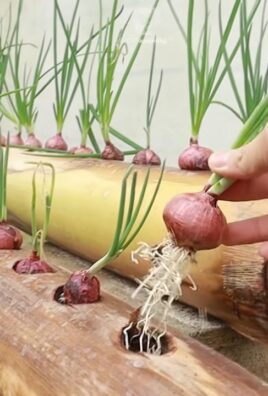
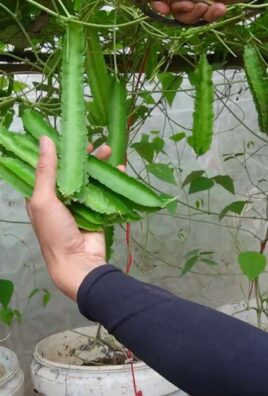
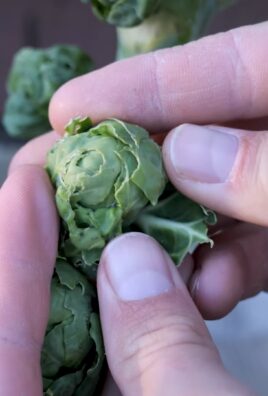
Leave a Comment